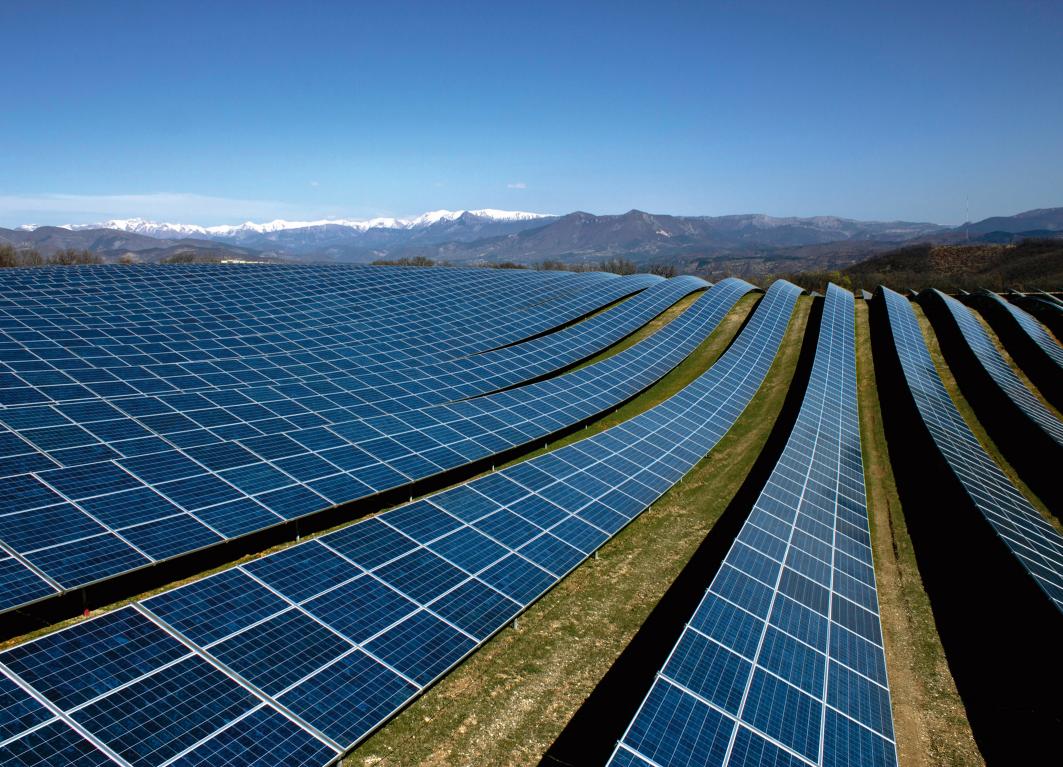Energy security is one of the pillars of economic growth, social welfare and national security, which Iran cannot ensure by solely relying on depleting energy sources.
The depletion of Iran's rich oil and gas reserves will lead to the loss of a significant source of revenue and power production.
Add to that the emission of air pollutants, particularly carbon dioxide, from fossil fuels and experts inevitably arrive at the conclusion that expanding renewable energy sources is one of the most underlying means of sustainable development, IRNA reported.
Development of renewables is fast gaining impetus globally, according to the International Energy Agency, as renewables will represent the largest single source of electricity growth over the next five years by rising over 26% by 2020 from 22% in 2013, a remarkable shift in a very limited period of time.
The IEA estimates that by 2020, the amount of global electricity generation coming from renewable energy will be higher than today’s combined electricity demand of China, India and Brazil.
Scientists go as far as to claim that the potential and the technology is there to reach close to 100% reliance on renewable energy by 2050, if huge policy changes are made worldwide.
Iran, an underdeveloped market for renewables by international standards, is laying out plans not to trail far behind the global trend in this key sector.
The government of President Hassan Rouhani has made it a top priority to raise output from renewables such as wind and solar power.
Based on the Fifth Five-Year Economic Development Plan (2011-16), the private sector is expected to have a share of at least 270 megawatts of power in renewables energy development.
With more than 300 sunny days throughout a year, well above the likes of the UK with 150 days of sunlight per year on average and with far less intensity in radiation, the Persian Gulf country has huge potential to expand solar energy infrastructure.
Nevertheless, experts say overinvestment in fossil power plants that costs the country billions of dollars every year has thwarted the development of renewables.
Fossil Dependence
Mostafa Rabiei, an official at the Renewable Energy Organization, says Iran is relying too much on non-renewable energy sources because of its relatively easy access to enormous oil and gas reserves and sleeping on an excellent opportunity to tap into its huge potential for wind and solar power.
"Iran can generate 60,000 MW by building a solar farm in an area of 100 square kilometers," he said, referring to the findings of an unnamed German company.
This is equal to more than 80% of Iran's installed power generation capacity of 74,000 MW coming from all energy sources combined.
"Investment in wind and solar projects is less cost-effective for major investors such as banks compared to funding fossil plants construction," he said, underlining that sanctions pose another major hurdle against the renewable sector's development.
"Banks look for long-term investments, but investing in solar energy (infrastructure) that become dilapidated in 10-12 years is not economically justified," he added.
Therefore, the government is planning to provide some 600 small towns and villages not linked to the national power grid with wind and solar electricity.
According to the official, producing 1 kilowatt-hour of solar power comes at a relatively expensive price of $2,500 (80,000 rials), but building solar power stations on a large scale would cut production costs by 60%.
Rabiei claimed that Iran can produce 40,000 MW of wind power and the amount can increase fivefold.
The output of Iran's biggest wind farms, Manjil and Roudbar, located in the northern Gilan Province, stands at 92 MW, but is expected to reach the 100-MW milestone in the near future.
Reaching Out to Leaders
Iran is trying to follow in the footsteps of leading countries in the renewable energy sector on the prospect of lifting the sanctions, which brightened after the landmark July 14 deal in Vienna over the country's nuclear program.
Earlier this week, Iranian officials explored grounds for cooperation in renewables with a high-ranking delegation from the northwestern German state of Lower Saxony.
One of the most advanced and industrialized countries in Europe, Germany produces 90,000 megawatts of its electricity demand from renewables.
An IEA report in 2014 said Germany's electricity sector was composed of 53% fossil, 17% nuclear and 30% renewable energy.
But there are other trend-setters in the renewables industry to look up to. In 2014, Denmark set a world record for wind production, getting 39.1% of its overall electricity from this clean energy source.
New Delhi, meanwhile, is trying to raise $100 billion in foreign investments over the next seven years to boost India's solar energy capacity by 33 times to 100,000 MW.
Small, Solid Steps
Tehran Municipality has greenlighted a plan to promote power generation from renewables in the capital.
The plan calls for producing at least 70% of electricity demand for lighting and 100% of the power to heat up water in parks and playgrounds across the capital from renewables, according to Ali-Mohammad Shaeri, head of the Environment and Sustainable Development Organization at the municipality.
"We should turn to renewable energies and walk in the direction of sustainable development before facing an energy crisis," he said.
Shaeri said power consumption from renewables in Iran accounts for less that 0.01% of the total power output, stressing that the world's average is more than 10%.


